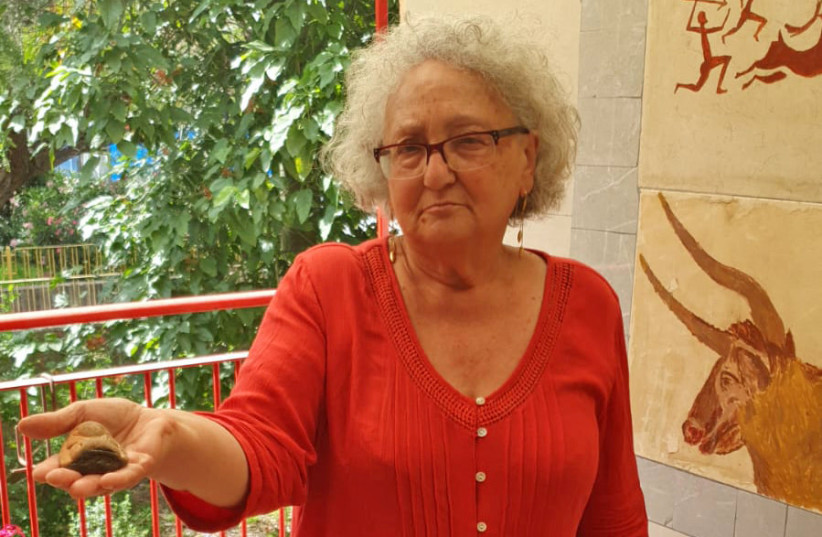Israeli woman finds ancient figurine of Egyptian goddess on the beach
A woman walking along the Palmahim Beach discovered an over 3,000-year-old figurine of the Egyptian goddess Hathor floating in the water, the Antiquities Authority announced on Tuesday.
Lydia Marner, a 74-year-old Azerbaijani immigrant from Lod, and her husband walk along the beach every week. As they were walking near the water about a month ago amid stormy weather, Marner noticed an unusual stone floating in the water near her.
“It was a rather stormy day; the waves were high, and the weather was wintry. During the walk by the water, I noticed a stone coming towards me. I immediately called my husband and told him – this isn’t something usual. I saw that there was something unusual here,” said Marner.
Marner took a photo of the figurine and sent it to her friends, who recommended that she have it checked by professionals. She proceeded to contact the Antiquities Authority through its Facebook page and Dror Citron and Idan Horn, inspectors for the Authority, came to examine the figurine and discovered that it was an ancient artifact.
“I can’t believe I merited this,” said Marner, who loves research and learning about history and archeology.
 Lydia Marner holding the ancient figurine of Hathor should found while strolling along the beach. (credit: Idan Horan/IAA)
Lydia Marner holding the ancient figurine of Hathor should found while strolling along the beach. (credit: Idan Horan/IAA)“At first my husband laughed at me, but today the whole family already knows the amazing story that happened to me. I’m very happy that the merit to find it fell to me.”
Dr. Amir Golani, an expert on the Bronze Age at the Antiquities Authority, stated that “these figurines, which were used for worship and are usually identified with the Egyptian goddess Hathor, are typical of the Canaanite culture in the Land of Israel – mainly in the Late Bronze Age and also in the Iron Age A.”
Golani explained that “the Canaanites used to adopt ritual and religious customs of the Egyptians, who ruled our region at that time. Just like homes today, where you install a mezuzah or hang a picture of a saint on the wall, back then – they used to place ritual figurines in a central place in the house, for good luck and protection from bad things. Although the statuette is very worn, its type is well-known to us. It is made of clay that was embedded into a stone pattern, which allows for the large-scale production of this type of figurine. It can be recognized that this is the goddess Hathor by her hairstyle, which simulates the horns of a bull, and by the prominent eyes and ears that were designed for her. Hathor was a powerful goddess, who symbolized many virtues for the Egyptians – fertility, strength, protection, and wisdom.”
Antiquities Authority launches campaign to collect privately-held artifacts
Last week, the Antiquities Authority and the Heritage Ministry launched the “Antiquities – return them with a click” operation, calling on residents who possess antiquities to submit them to the state.
“The operation to return the antiquities led by the Heritage Ministry and the Antiquities Authority is important and significant,” said Heritage Minister Amichai Eliyahu. “The antiquities that will be returned will help to piece together the historical story of the Land of Israel. I call on the general public who has any antiquities in their homes to return them to the Antiquities Authority, which holds them under proper preservation conditions. Some of the antiquities will be presented to the public in various exhibitions in museums.”
Eli Escozido, director of the Antiquities Authority, explained that “many people keep in their private homes antiquities that came into their possession under different circumstances. Some were collected in the field, some were inherited. A large portion of them are not aware that by law they have to report the antiquities, which are a public historical treasure.”
“The campaign asks for the participation of the citizens in returning the antiquities to their natural and legal place as our heritage assets. With us, in the state treasuries, the sensitive items will be documented and preserved from the ravages of time. Some of them will move on to exhibitions, and maybe they will even add information about the country’s past. We already see that significant items are coming to us, and are curious to find out what else will arrive at our door.”





Comments are closed.